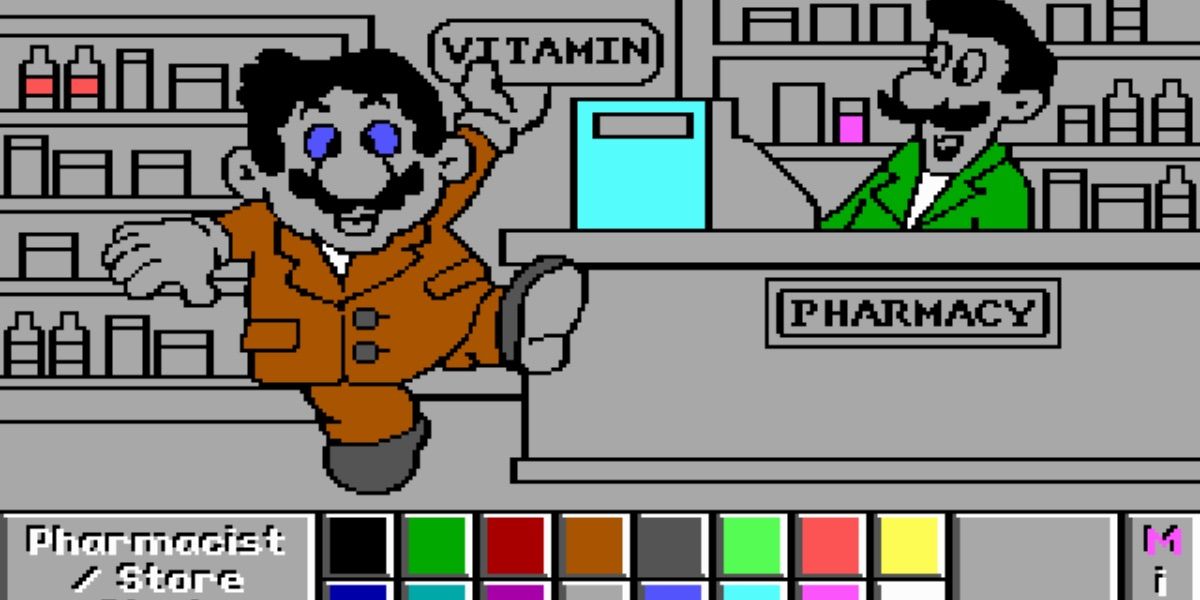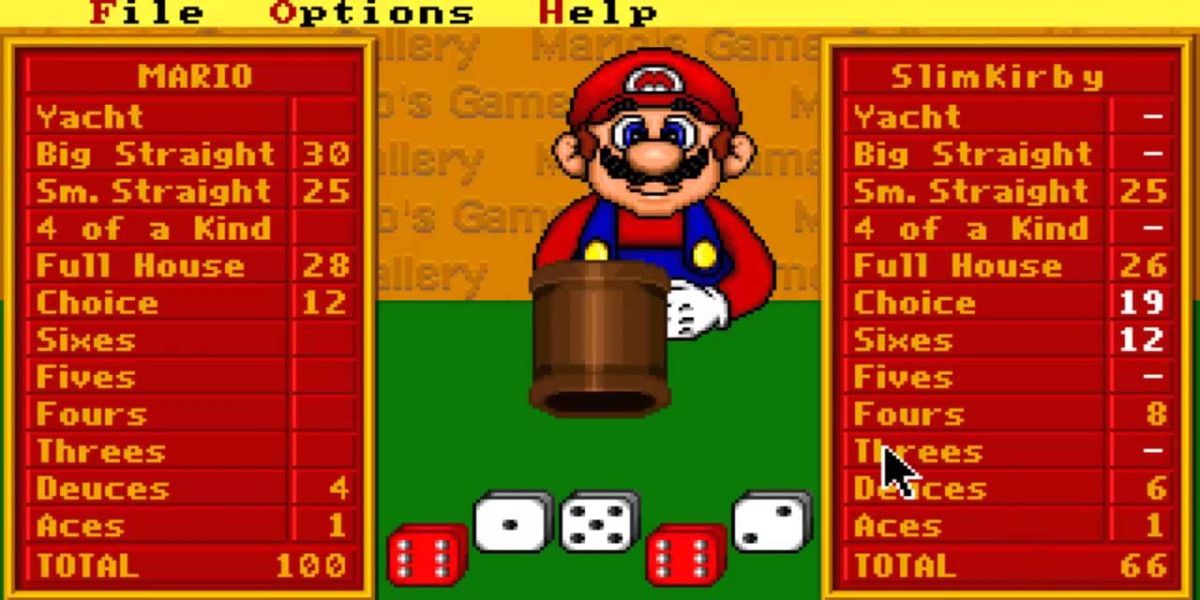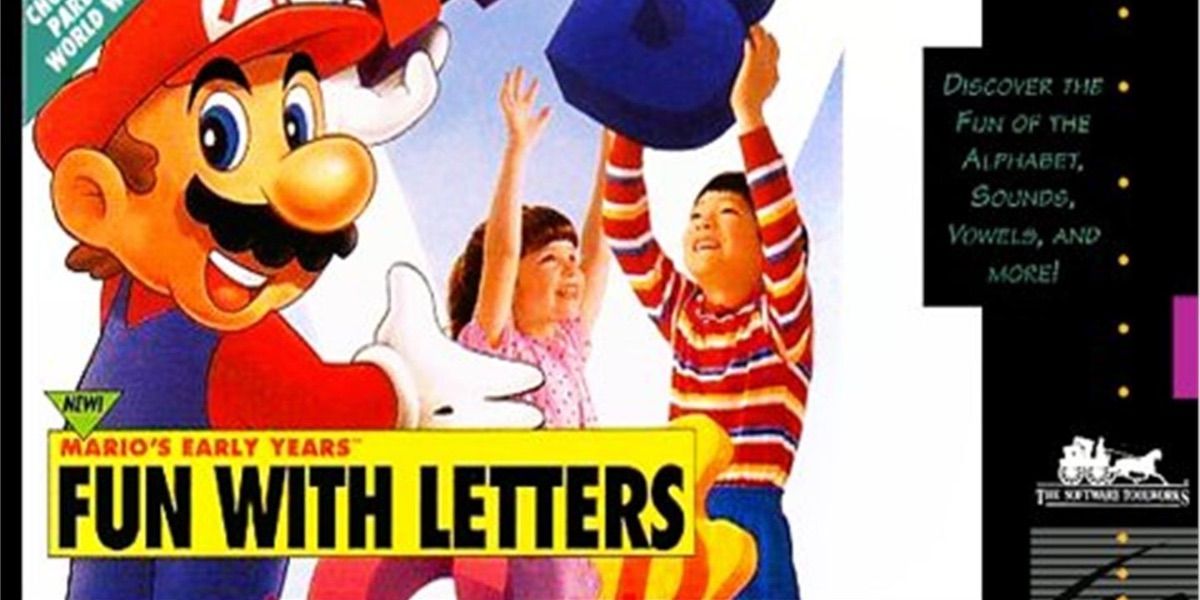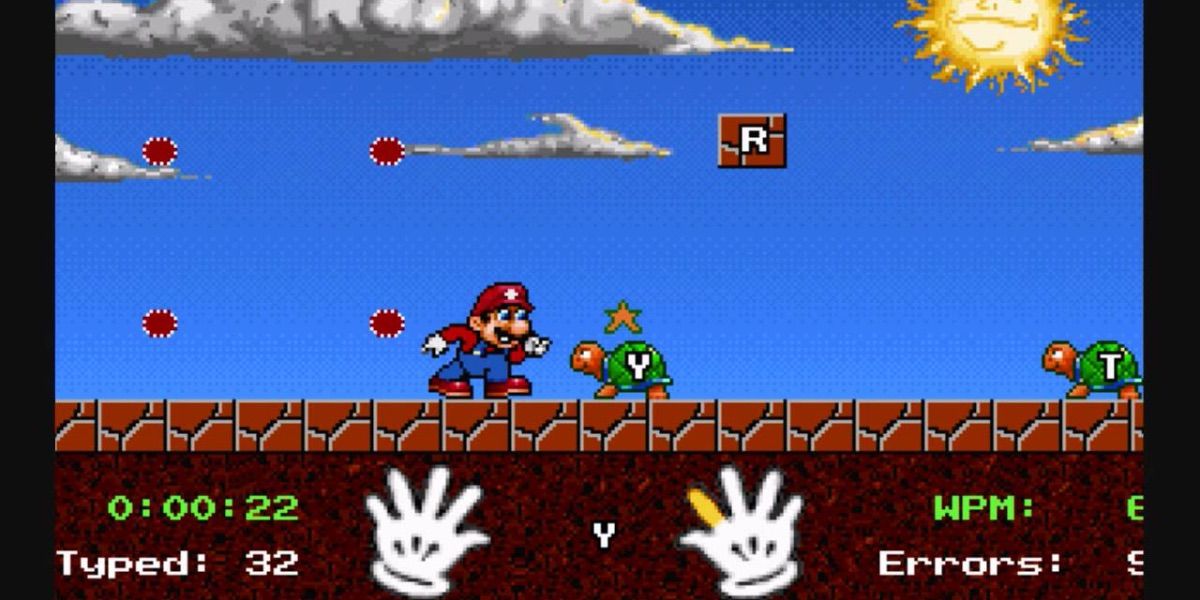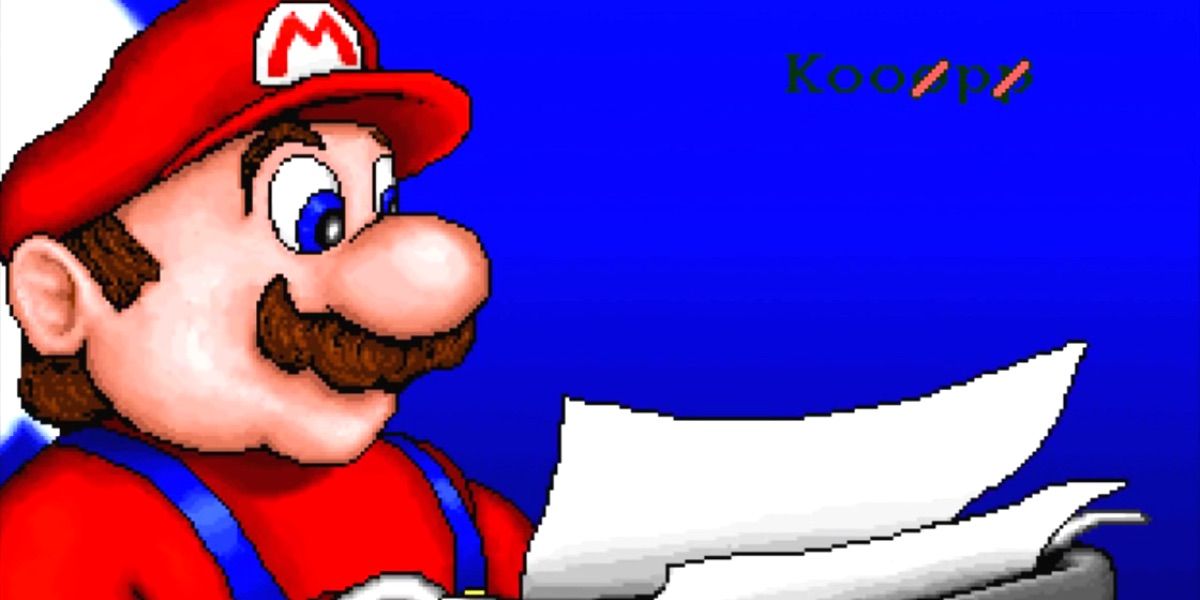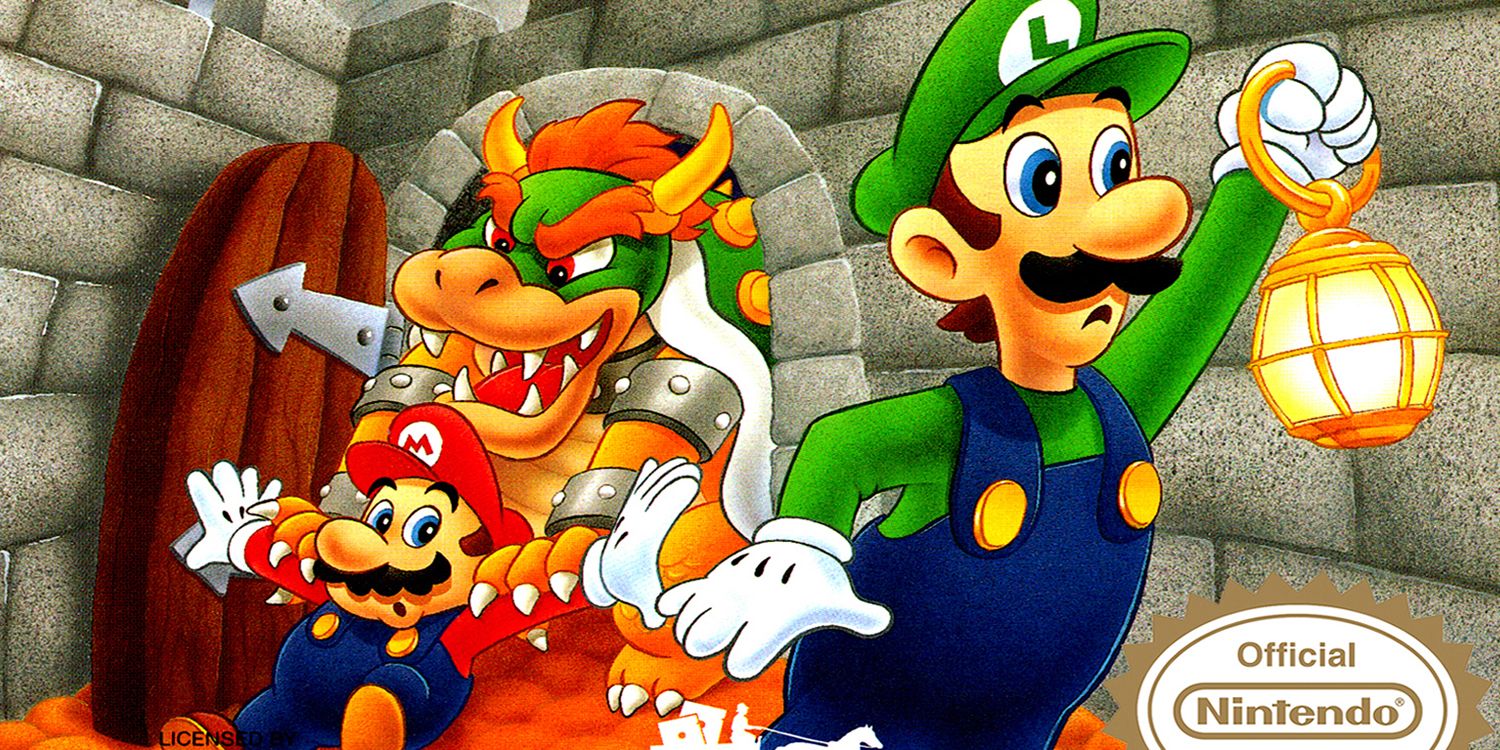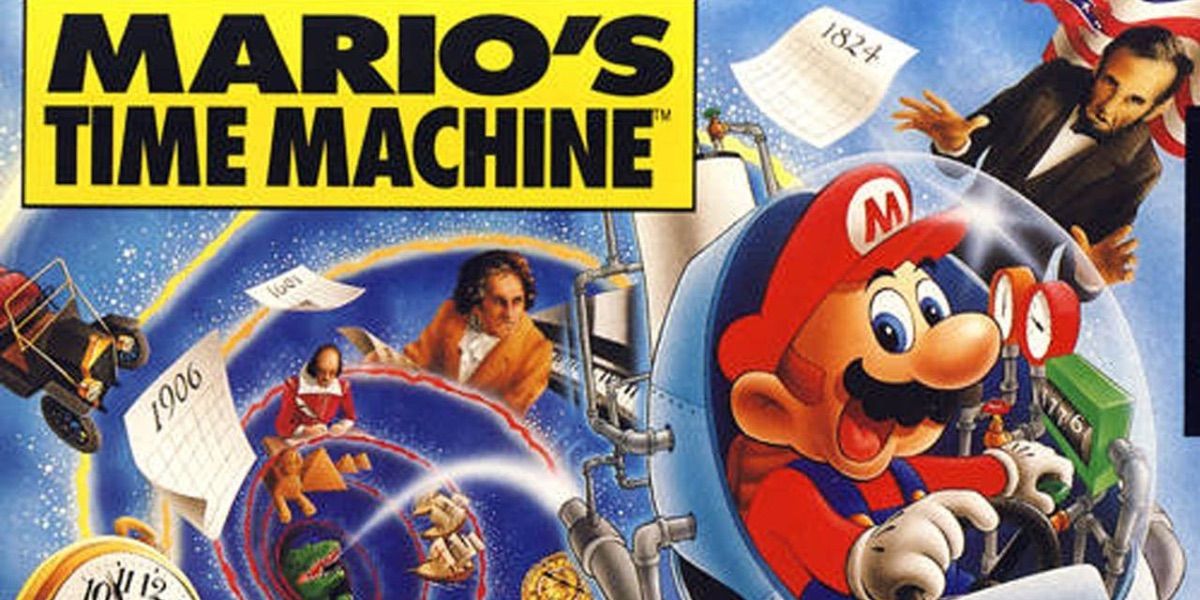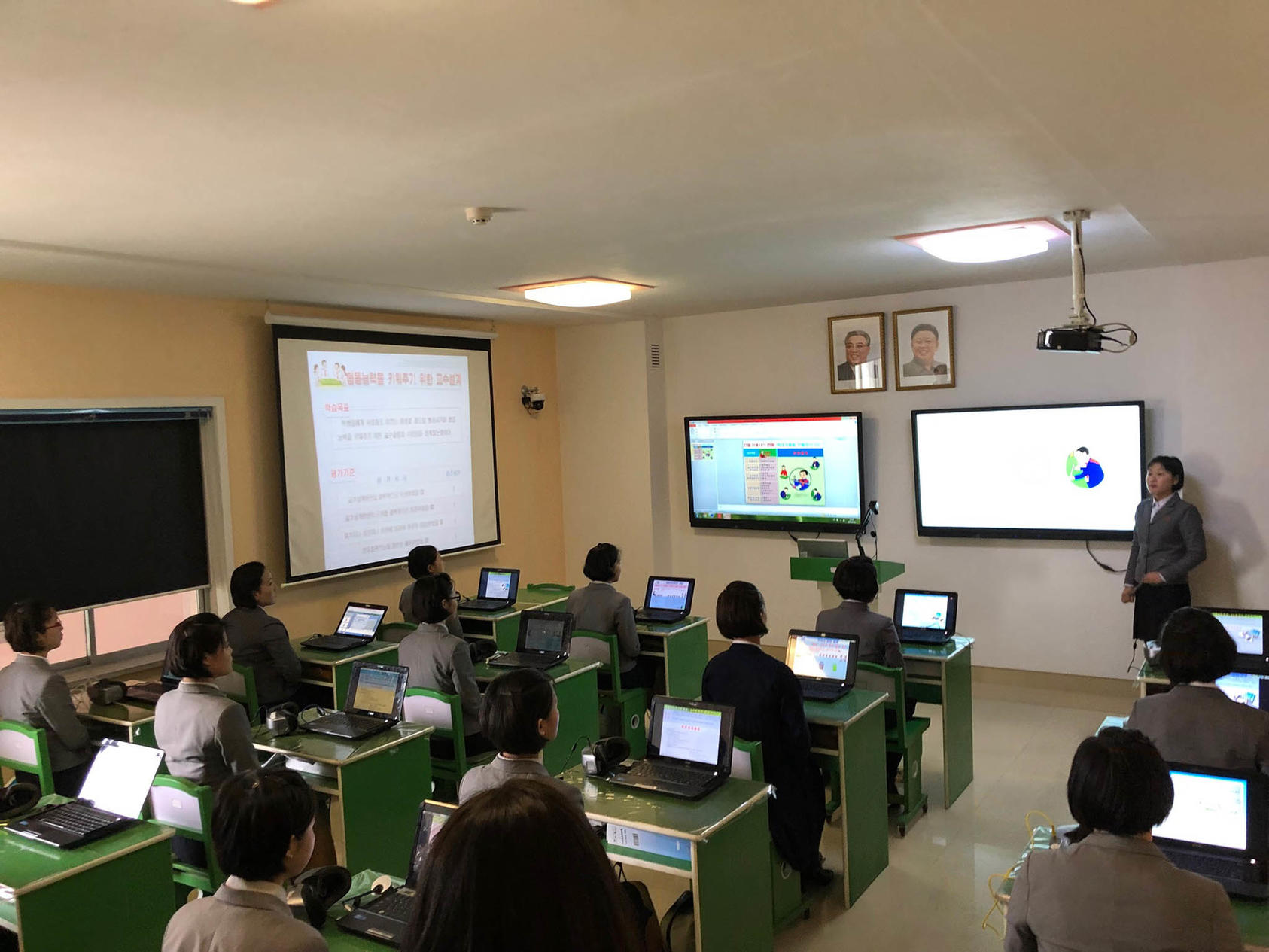Every Educational Mario Game, Ranked
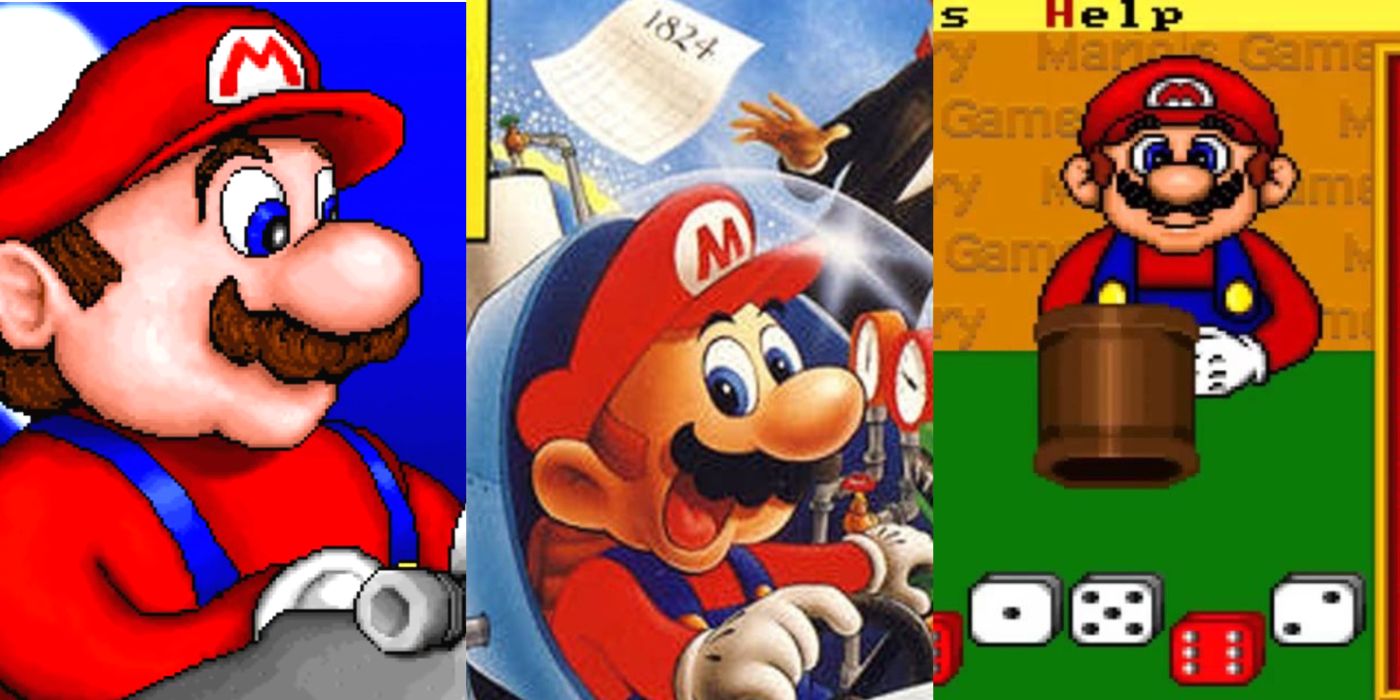
Gaming should be a distraction from school, yet the video game market is often inundated with educational games. Even Nintendo’s mascot, Mario, has starred in his very own learning-themed titles that attempted to make education fun.
From SNES titles such as Mario is Missing to DOS “classics” such as Mario Teaches Typing, the worlds of entertainment and education collided with the Italian plumber in the middle. Though only a handful of Mario educational titles were ever released, some were actual games while others are only remembered as cynical cash-ins on the Nintendo license.
7 Super Mario Bros. & Friends: When I Grow Up (1992)
Early PC games were noted for being simple, but by 1992 they could do much more than was presented in Super Mario Bros. & Friends: When I Grow Up. Essentially a digital coloring book, the game allowed users to color various images of familiar Nintendo characters as they appear in scenes depicting different careers both mundane and unusual.
The game offers very little in the way of actual education and isn’t even particularly advanced for an early-1990s computer game. The colors are as limited as the graphical capability of computers at the time, and the use of the Nintendo characters is quite boring and uninspired. Each picture is accompanied by a small animation, and it does have a bit of information about each career presented. There’s nothing particularly wrong with the game itself, but the inclusion of Nintendo mascots makes it feel quite underwhelming.
6 Mario’s Game Gallery (1995)
While the best games of the 1990s were pushing boundaries, Mario’s Game Gallery seemed content to set the industry back to the Stone Age. The game features the titular character as he interacts with the user and plays against them in a series of 5 extremely common board and card games.
Featuring Mario as an afterthought, the game is helpful in teaching younger players how to play the games contained within. At the time of its release, it was praised for being a good game for its target audience, though others grumbled about the wasted potential of the Mario license. Nintendo has always been a marketing machine, but Mario’s Game Gallery was instantly recognized by many gamers as a cynical cash grab that harmed the Mario brand.
5 Mario’s Early Years! (1994)
Released as a trilogy of games in the latter months of 1994, Mario’s Early Years! touched on a series of early education topics. Ranging from basic number and reading skills to a more diverse set of subjects in the final game, the trilogy was aimed towards the youngest demographic of potential gamers and the quality was reflected in its aim.
The player is given the option of selecting one of three playable characters, though none possess any abilities that distinguish them from each other. All three games are broken into a series of islands that can be explored, each with their own topics and mini-games reflecting the title’s overall theme. The game features a wide range of familiar characters from the Mario mythos, and made an attempt to make the visuals conform to typical Nintendo standards. Judging an early education game based on the quality of other games is unfair, but its popularity does seem to indicate that it got the educational aspects right.
4 Mario Teaches Typing (1992)
Most noted for being the debut of Charles Martinet as the full-time voice actor for Mario, Mario Teaches Typing was an educational computer game developed by Interplay with Nintendo’s seal of approval. The game hoped to teach the player typing skills and used a series of mini-games to engage the user in proper keyboard finger placement.
Unlike more cynical games that merely seemed to slap Mario on as an afterthought, Mario Teaches Typing was able to integrate familiar Mario imagery into the gameplay. The user navigates levels that are ripped straight from the best Mario games, and uses typing skills to help their favorite player defeat enemies and traverse the stage. Though it could never be as exciting as a typical Mario game, Teaches Typing featured pleasing sprites and a fair approximation of Nintendo’s signature style.
3 Mario Teaches Typing 2 (1996)
Educational games rarely get sequels, but the relative success of the first Mario Teaches Typing title showed that there was demand for more. The sequel is based on the same concept as the original game, but integrated a story involving Mario and Luigi recovering pieces of a magical typewriter in order to use it to defeat Bowser.
Expanding the game with larger scenes and more of a narrative, Mario Teaches Typing 2 somewhat resembled the common tropes in a Mario game. Like its predecessor, the game is a useful tool to help gamers learn keyboard skills, and it is a rare educational game that actually teaches the player something. Despite these positives, it is still extremely limited in scope and features nothing to attract players to replay it.
2 Mario Is Missing! (1993)
Though most Mario learning games were unabashed in their educational nature, Mario Is Missing! at least tried to disguise its learning elements behind actual gameplay. After learning of the theft of famous landmarks, and the kidnapping of his brother by Bowser, Luigi must travel the world to stop his arch-nemesis’ evil plans.
The game’s main educational theme is geography, and there are enough things going on that the player sometimes forgets that they are learning. The SNES version featured platforming elements to further disguise the education, and there is enough going on to categorize Mario Is Missing! as a full-fledged game. Unfortunately though, the level design is frustrating and there are lengthy text sequences that dump large amounts of information on the player.
1 Mario’s Time Machine (1993)
Though far from being the greatest game of all time, Mario’s Time Machine is considered by some to be an underrated Nintendo game from the company’s classic era. The game finds Mario traveling through time to recover various historical artifacts that have been stolen by Bowser and placed in his personal museum.
The PC version of the game used a point-and-click system, but the console versions featured the familiar side scrolling controls from Super Mario World. Like its sister game, Mario’s Time Machine went a long way to incorporate actual game elements that made learning much more enjoyable. The graphics are pleasing, and the game actually feels like a labor of love as opposed to a quick cash-in to get ahead of the educational gaming craze of the era.

